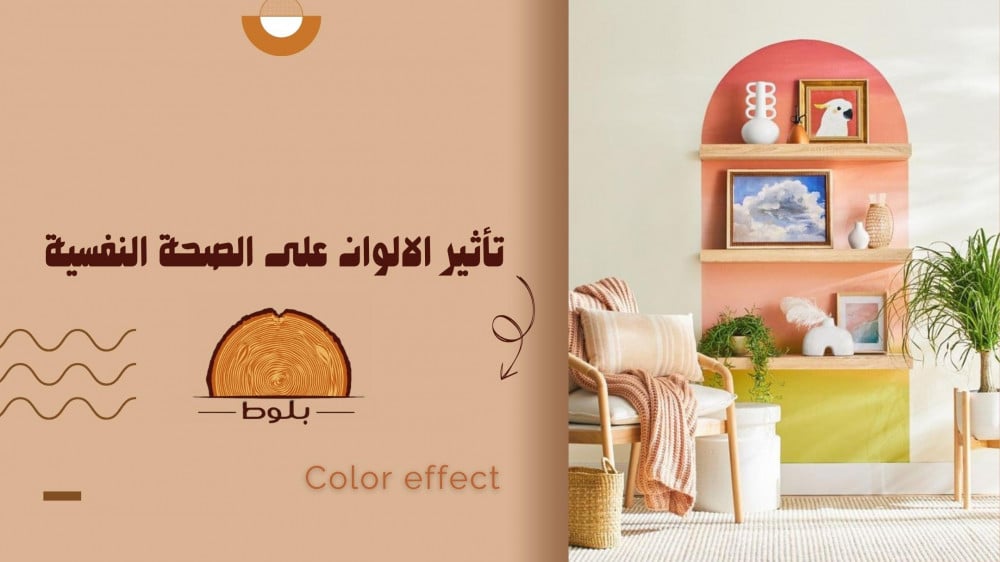Color psychology is an important factor when considering how our environment affects our mental health. Its essence is the various influences on our mental state, as well as our emotions and behaviors. In our current world, and with the Kingdom of Saudi Arabia's efforts to achieve the 2030 Global Goals, contemporary diseases have emerged in parallel, drawing global attention to good health and the human right to well-being.
In order to achieve the Sustainable Development Goals, one of which focuses in Goal 3 on ensuring a healthy life and promoting well-being, it is necessary to know what are the powerful influences on mental health.
Does choosing home colors improve mental health?
Perhaps the most prominent diseases of our time are anxiety and depression, according to recent studies. However, color selection techniques and methods in interior design have become a treatment that contributes to reducing stress and depression. A link can be drawn between home design and emotional stability, which improves mental health.
The relationship between interior design and arousing positive or negative emotions in humans has been around for thousands of years, such as:
The Chinese art of Feng Shui. This relationship highlights the importance of consciously interacting with decorative elements to foster creativity, peace, and psychological comfort.
Reflecting on the impact of colors and their benefits on mental health, color saturation, which refers to the purity of the color and its brightness (i.e., the amount of white in the color), are two important elements of its emotional power. Bright colors, on the other hand, are less saturated and have a relaxing effect.
For example,
- Pure red is associated with anxiety.
- While pale pink is a soothing color because it is less saturated.
But not all saturated colors evoke negative feelings. Emerald green is a deeply saturated color, less saturated, but it makes you feel energetic and want to move.
5 Examples of Colors and Their Associated Moods
The psychological effects of colors play a significant role in determining preferences for some over others. Interior designers and artists play on color associations to create a distinct mood. In the following examples, consider the emotions evoked by various colors:
First - Red
The primary color on the color wheel and the most intense in evoking certain moods and emotions, turquoise is a powerful stimulant that raises energy levels in people, evoking feelings of love, anger, and danger. It generates a stimulating effect and increases the heart rate, making it a powerful aid in eliminating negative feelings and persistent anger.
Second - Yellow
The color of the sun and a symbol of radiance, it evokes feelings of activity, happiness, and optimism. It may come as a surprise, however, as it signifies a risk-taking attitude that is more acceptable to the average person. When used in flowers or artwork, it attracts admiring glances, creating positive feelings in the surrounding area.
Be careful not to use too much yellow or its deeply saturated shades - the purity of the color - as this can cause eye strain and feelings of frustration.
Third - Green
Drawn from nature, green is an earthy color that creates a calm and sophisticated atmosphere. Spreading it throughout your home by placing multiple flower pots in the corners of your living room or office will create a calm and refreshing mood.
Fourth - Blue
The color blue has the power to evoke a wide range of emotions, ranging from light to dark. For example, dark shades of blue can evoke feelings of loneliness and a desire to separate oneself from others.
While light blue in its various shades has a calming effect, inducing psychological comfort and reassurance, it's often recommended for trauma patients or those suffering from grief to sit on the beach. Painting the walls of a room in this color can achieve the same effect, improving mental health.
Fifth - Purple
Purple has a calming effect that symbolizes power and wealth. Contemporary purple is commonly used in interior design, pairing it with neutral furniture and decor.
Now you can think about the feeling you have while reading the article, look around at the colors and decorations of the place around you, and ask:
Do you need to make a change in your mental health or have you been able to control your emotions by surrounding yourself with positive energy colors?

